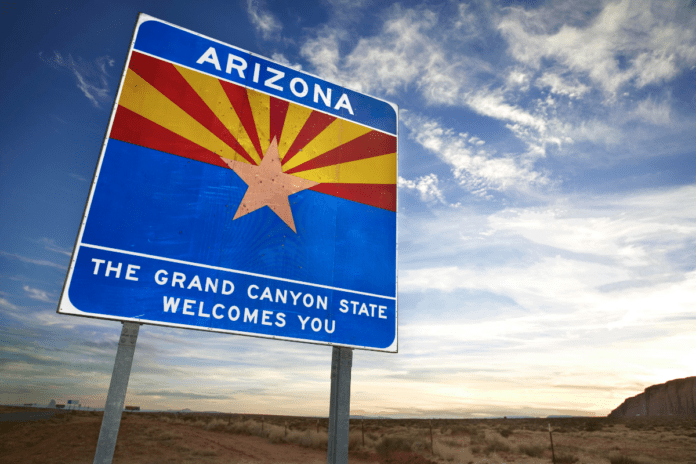Why is Arizona becoming one of the most important logistics and transportation hubs in the United States? The state’s strategic location, expanding infrastructure, and business-friendly environment have made it a prime destination for warehousing, trucking, and freight operations.
Major companies are investing in distribution centers and supply chain networks, while Arizona continues to upgrade its highways, rail systems, and public transit to meet increasing demand. At the same time, a push toward greener logistics solutions is reshaping how goods move through the region.
With rapid growth comes new challenges. As more businesses choose Arizona for their logistics operations, the state must keep up with transportation improvements, sustainability initiatives, and road safety measures. The expansion of highway corridors, smart infrastructure, and autonomous trucking technologies is helping Arizona stay ahead, but balancing economic expansion with safety and efficiency remains a key priority.
Why Big Companies are Choosing Arizona for Warehousing and Logistics
Arizona has rapidly become a prime destination for warehousing and logistics operations, attracting major companies due to its strategic advantages. Between 2019 and 2023, the Phoenix metropolitan area expanded its distribution and warehouse space by approximately 44%, adding nearly 58.9 million square feet. This growth elevated Phoenix to the eighth-largest inventory in the U.S. for such facilities.
Several factors contribute to Arizona’s appeal. The state’s proximity to major markets, including California and Texas, allows for efficient distribution channels. Arizona offers a business-friendly environment with competitive operating costs, making it an attractive alternative to neighboring states. The influx of major companies establishing warehousing and distribution centers in Arizona underscores its growing significance in the logistics sector.
Keeping Up with Arizona’s Expanding Transportation Network
Arizona is actively addressing road safety challenges amid its expanding transportation network. In 2023, the state recorded 1,307 traffic fatalities, a slight decrease of 0.98% from the previous year. Despite this reduction, it remains the second-highest annual fatality total on record, underscoring the ongoing need for effective safety measures.
To combat these concerning statistics, the Arizona Department of Transportation (ADOT) has developed the 2024 Arizona Strategic Highway Safety Plan (SHSP). This comprehensive, data-driven plan aims to reduce fatalities and serious injuries on all public roads. Key strategies include enhancing safety data sharing, securing funding for safety initiatives, and implementing education campaigns to discourage aggressive and distracted driving behaviors.
With Arizona’s growing logistics and trucking industry, the demand for heavy-duty towing services is also increasing. Accidents and breakdowns involving commercial trucks can cause significant traffic delays, particularly on high-traffic freight corridors like I-10 and I-40. Rapid-response heavy-duty towing services help minimize road congestion by ensuring quick clearance of disabled vehicles, reducing the risk of secondary accidents.
ADOT’s 2024 Arizona Active Transportation Safety Action Plan focuses on improving safety for pedestrians and bicyclists. The plan advocates for the development of more pedestrian and bicyclist facilities, roadway improvements to slow down drivers, and educational campaigns to promote safe travel behaviors among all road users.
Arizona’s Infrastructure Boom and What’s Being Built to Keep Up with Demand
Arizona is experiencing a significant infrastructure boom to meet the rising demands of its expanding population and economy. The Arizona Department of Transportation (ADOT) has initiated multiple projects to enhance the state’s transportation network. In 2024, ADOT plans to commence two widening projects on Loop 101, aiming to improve traffic flow and reduce congestion in the Phoenix area. Ongoing improvements along Interstate 10 near the Broadway Curve and Interstate 17 north of Phoenix are set to advance, further bolstering the state’s freeway system.
Public transit is also undergoing a transformation. The Valley Metro Light Rail is expanding, with the Tempe Streetcar, which began service in 2022, setting the stage for more ambitious projects. These initiatives aim to reduce traffic congestion and provide greener transportation alternatives. The Northwest Extension Phase II, which extends the light rail to new areas, was completed and opened to the public on January 27, 2024, ahead of its original schedule.
To support these developments, Arizona has outlined a comprehensive Five-Year Transportation Facilities Construction Program. The 2024–2028 plan includes more than $9 billion in transportation investments, with $2.6 billion allocated to upgrading pavement conditions and bridge infrastructure across the state. This substantial investment underscores Arizona’s commitment to enhancing its infrastructure to accommodate current and future demands.
How Arizona is Paving the Way for Greener Trucking and Logistics
Arizona is actively advancing sustainable practices in its transportation sector, particularly in trucking and logistics. ADOT has implemented a Sustainable Transportation Program that integrates eco-friendly strategies into core activities such as planning, design, construction, and maintenance. This program emphasizes efficient resource utilization to maintain a robust transportation network while achieving economic, social, and environmental goals.
Arizona is also investing in green infrastructure to support sustainable transportation. The Box Canyon Solar Project, initiated in November 2023, aims to establish a 300-megawatt solar operation capable of powering approximately 77,000 Arizona homes. Projects like this not only provide renewable energy but also support the electrification of transportation systems, including electric vehicle charging infrastructure, thereby promoting greener logistics operations across the state.
Conclusion
What does Arizona’s rapid transformation in logistics, infrastructure, and road safety mean for the future? The state is positioning itself as a key logistics hub, with major corporations investing in warehousing and distribution due to its strategic location, lower operating costs, and expanding infrastructure.
At the same time, multibillion-dollar transportation projects are reshaping highways, public transit, and freight corridors to accommodate increasing demand. These developments, coupled with Arizona’s push for sustainability, signal a shift toward a more efficient and environmentally responsible transportation network.
However, growth brings challenges. While Arizona continues to expand its transportation infrastructure, maintaining road safety amid rising commercial traffic is a pressing concern. New initiatives, from autonomous freight trucking to enhanced road safety programs, will determine how well the state balances economic expansion with public safety. As Arizona evolves into a logistics powerhouse, its ability to integrate innovation, infrastructure, and sustainability will define its long-term success in the industry.





